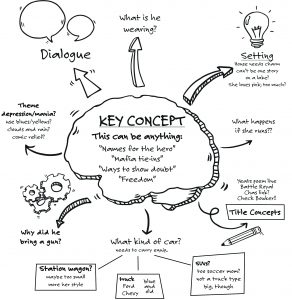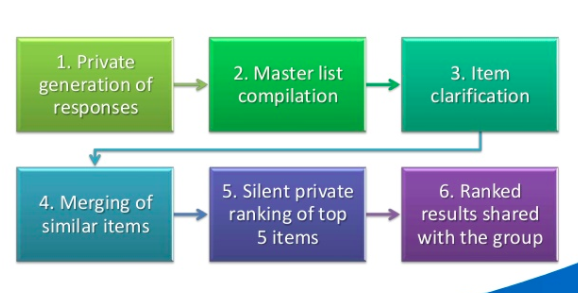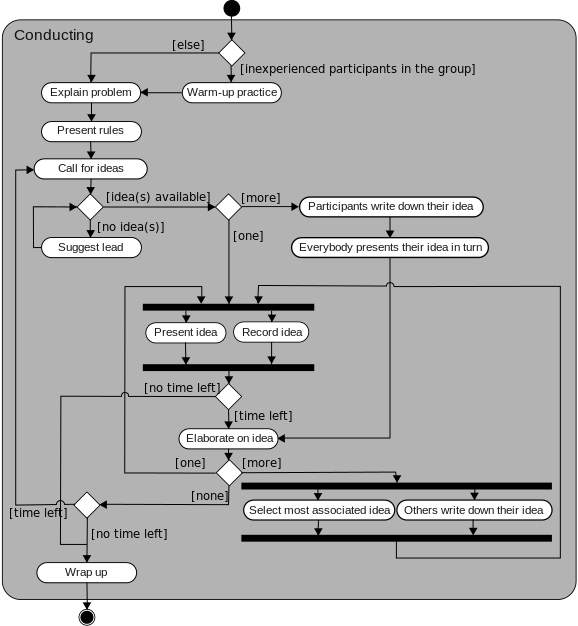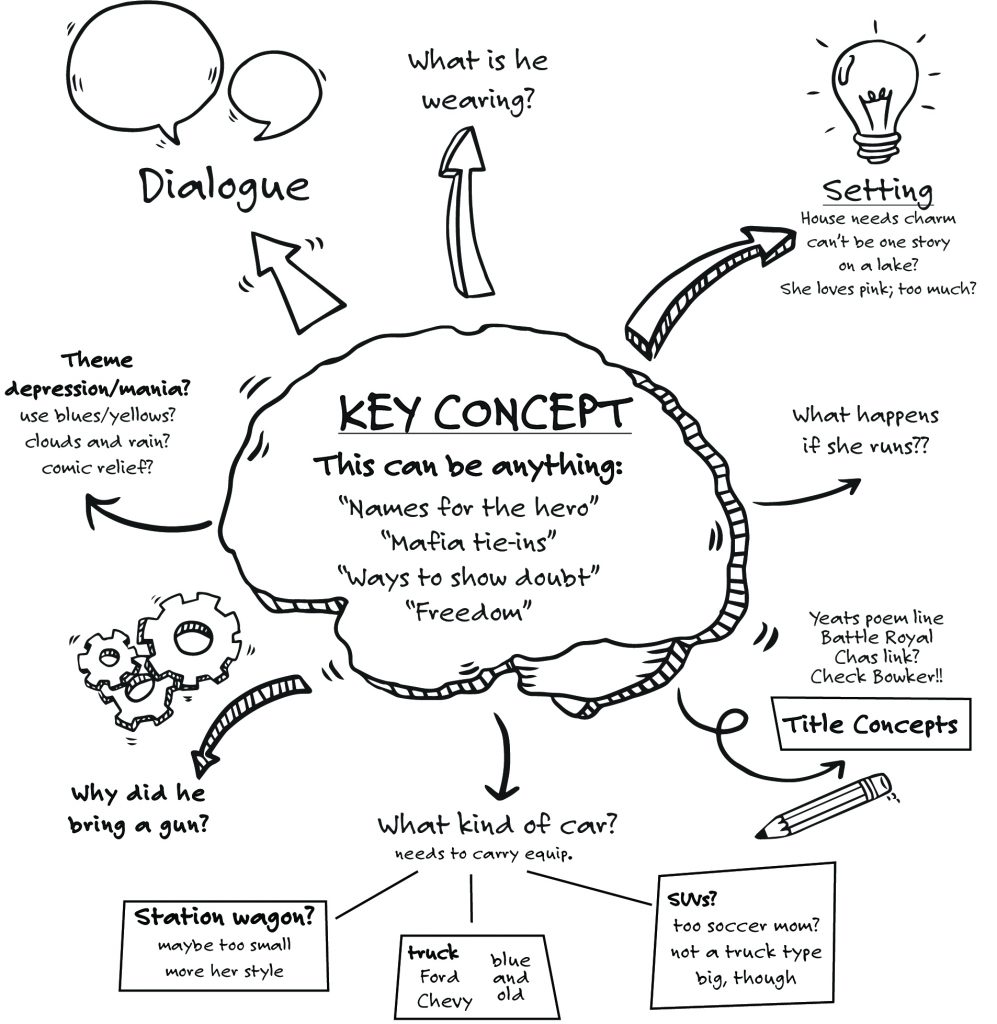
Last updated: 1st Dec, 2023
Generating innovative and creative ideas is a key component of success in many fields, from business and marketing to science, technology, and the arts. However, the process of coming up with new and unique ideas can be challenging, especially when faced with deadlines, limited resources, or creative blocks. This is where brainstorming or mindstorming comes into picture. Fortunately, there are several different types of brainstorming techniques that can help individuals and teams generate great ideas and innovate.
While brainstorming is one of the most effective techniques out there, not all brainstorming sessions are created equal. The question that is frequently asked is how to brainstorm for effective outcomes? In order for a brainstorming session to be successful, you need to use the right techniques. In this blog post, we will discuss different types of brainstorming techniques and explain how they can help you come up with unique ideas. Each technique offers a unique perspective on problem-solving and idea generation, and can be applied in different contexts and for different purposes.
Whether you’re a business owner looking to come up with a new product idea, a writer struggling with writer’s block, or a student seeking inspiration for a project, these techniques can help you break free from creative constraints and explore new possibilities. So, let’s dive in, define brainstorming techniques and discover the power of brainstorming for generating great ideas!
What does brainstorming means?
Brainstorming or mind storming is a widely used method for generating ideas and finding solutions to problems, particularly in collaborative settings. It involves gathering a group of people and encouraging them to freely share thoughts and ideas on a particular topic or problem. The key principle behind brainstorming is the suspension of judgment and criticism, allowing participants to think more openly and creatively. This environment fosters an uninhibited exchange of ideas, where even the most unconventional thoughts are welcomed and considered. The collective dynamics of a group engaging in brainstorming often lead to a synergistic effect, where the ideas generated by one individual can spark additional thoughts and concepts among others, leading to a richer and more diverse set of solutions than might be achieved individually.
Brainstorming can take various forms, but it typically follows a few core guidelines.
- First, the focus is on quantity over quality, under the belief that a high volume of ideas increases the likelihood of producing a novel and effective solution.
- Second, participants are encouraged to build on or combine ideas generated by others, which can lead to more refined and comprehensive solutions.
- Third, criticism or evaluation of ideas is usually deferred until the brainstorming session has concluded, to ensure that creative flow isn’t hindered by judgment or analysis.
Nominal Group Technique (NGT): Brainstorm Ideas & Vote them for Selection
The nominal group technique (NGT) can be defined as a brainstorming method where ideas are generated and voted upon in an organized manner. In NGT, individuals or a bunch of individuals (small teams) brainstorm individually to come up with ideas, which are then discussed as a group. Each idea is written down on index cards or sticky notes and collected together for voting. Here is the process flow:
- The first step of the process involves defining the problem or question that needs to be addressed and communicating it clearly to the individuals / teams.
- This is followed by teams generating as many unique ideas as possible without judging them. Teams write their ideas or solutions to the problems on a set of index cards or sticky notes. Each idea should be written on a separate card.
- This is followed by a round of discussion where each member of the brainstorming team gets to talk about their ideas in detail and explain why they think it’s a good idea. Here the goal is to present the ideas without worrying about criticism or discussions.
- The next step is teams reviewing the ideas and clarifying on the ideas presented. In this step, the ideas that are duplicates or unclear get removed.
- The next step involves voting or ranking on the brainstormed ideas, and this can either be done privately (numerical rating) or publicly (show of hands) depending on what you prefer.
- Finally, the highest voted ideas are prioritized and discussed for implementation purposes.
The following diagram represents the NGT for brainstorming.

Advantages of using NGT as preferred brainstorming method
The NGT technique has several advantages over traditional brainstorming methods, such as:
- It allows all team members to contribute their ideas in a non-threatening and impartial way, avoiding the influence of dominant personalities or groupthink.
- It provides a structured and efficient process for generating and evaluating ideas, reducing the risk of wasted time or irrelevant discussion.
- It encourages active participation and engagement from all team members, fostering a sense of ownership and commitment to the outcome.
When to use NGT method for brainstorming?
Nominal Group Technique (NGT) is a structured method for group brainstorming that encourages contributions from everyone. It’s particularly effective in certain situations:
- Diverse Group Members: When your team consists of individuals with varying perspectives or areas of expertise, NGT helps to gather a wide range of ideas.
- Quiet or Introverted Participants: NGT allows those who might be overshadowed in open discussions to contribute equally.
- Controversial or Sensitive Topics: NGT can be useful when the topic at hand might lead to heated debates or when there’s a risk of groupthink.
- Overcoming Dominance: In scenarios where one or two members tend to dominate the conversation, NGT levels the playing field by giving everyone an equal opportunity to contribute.
- Remote or Asynchronous Teams: NGT can be adapted for remote teams, allowing members to contribute ideas over time, rather than in a single meeting.
- Consensus Building: NGT can be effective in situations where a group consensus is necessary, as it allows for the consideration of all opinions and ideas.
NGT Brainstorming Examples
The following are brainstorming example scenarios where NGT can be effective:
- Scenario #1: Development of a New Health Policy at a Hospital: In a hospital setting, the administration is looking to develop a new health policy aimed at improving patient care and safety. The team responsible for this includes doctors, nurses, administrative staff, and representatives from the legal and ethics departments. Given the diverse range of expertise and the sensitivity of the topic, utilizing the Nominal Group Technique (NGT) can be highly effective.
- Scenario #2: Enhancing Customer Service in a Retail Chain: A large retail chain is experiencing a decline in customer satisfaction and seeks to revamp its customer service approach. The management team decides to gather representatives from various departments, including sales, customer service, marketing, and logistics, as well as a few store managers from different locations. The goal is to identify key areas for improvement and develop innovative strategies to enhance overall customer satisfaction.
Direct Brainstorming
Direct brainstorming can be defined as a brainstorming method where teams brainstorm ideas together. It’s a simple brainstorming technique that involves throwing out as many unique ideas as possible without judging them and then discussing each idea in detail until you come up with something great. The process starts by defining the problem or brainstorming topic, followed by two rounds of brainstorming: one for generating ideas, and one for refining ideas. In the first round, all team members brainstorm ideas together and write them down on a piece of paper. The second round involves discussing each idea in detail until you come up with something great. Once you’ve refined your list of ideas, it’s time to vote on them and decide which ones to move forward with. The following diagram represents the direct brainstorming technique.

Advantages of using Direct Brainstorming as preferred brainstorming method
Direct brainstorming has several advantages over more structured techniques, such as:
- It encourages spontaneity and creativity, allowing participants to express their ideas without fear of judgement or rejection.
- It promotes collaboration and communication, as participants can build on each other’s ideas and perspectives.
- It can generate a wide range of ideas and solutions quickly and efficiently, allowing the group to move forward with decision-making or problem-solving.
When to use Direct Brainstorming method for brainstorming?
Direct brainstorming, often known as traditional or unstructured brainstorming, is a free-flowing, spontaneous idea generation process. It’s particularly effective in certain situations:
- Rapid Idea Generation: When you need a large number of ideas quickly, direct brainstorming can be highly efficient as it encourages spontaneous and rapid idea flow.
- Highly Collaborative Environment: It’s ideal for teams that are already cohesive and comfortable with open communication, as it relies on active participation and interaction.
- Early Stages of Project Development: In the initial phases of a project, when exploring a wide range of possibilities is more important than converging on a single solution, direct brainstorming can be very useful.
- Informal or Less Structured Teams: In environments where teams are less formal or hierarchical, direct brainstorming can thrive, allowing all members to participate equally.
Direct Brainstorming Examples
The following are a couple of brainstorming examples of different scenarios where direct brainstorming technique can be useful:
- Scenario #1: Advertising Campaign for a New Product Launch: A marketing agency is planning an innovative advertising campaign for a new tech gadget. The team includes creative directors, copywriters, graphic designers, and social media strategists. They need fresh, creative ideas to make a significant impact in the market. Here is why direct brainstorming technique will prove to be useful:
- Creative Exploration: The team needs original and creative ideas, and direct brainstorming encourages free-flowing, unrestricted thought processes.
- Dynamic Team Interaction: The team is made up of creative professionals who are likely comfortable with open and spontaneous discussions.
- Fast Paced Idea Generation: With a pressing project timeline, the team needs to generate a large number of ideas quickly.
- Scenario #2: Startup Brainstorming Session for New App Features: A tech startup is looking to add new features to its mobile application. The team consists of developers, UI/UX designers, and product managers. They aim to brainstorm features that enhance user experience and engagement. Here is why direct brainstorming technique will prove to be useful:
- Leveraging Diverse Skill Sets: The team’s diverse skill sets can be utilized best in a free-flowing brainstorming session where each member can contribute from their area of expertise.
- Encouraging Innovative Thinking: The startup environment often thrives on innovative, boundary-pushing ideas, which can be stimulated through an unstructured brainstorming process.
- Flexibility and Adaptability: In a startup, plans can change rapidly, and direct brainstorming allows for adaptable and flexible thinking.
- Inclusive Participation: The casual and inclusive nature of direct brainstorming ensures all team members, regardless of their role, can contribute ideas.
Guided Brainstorming
Guided Brainstorming is based on the Theory of Inventive Problem Solving which is the Russian acronym for TRIZ (pronounced treez – Teoriya Resheniya Izobreatatelskikh Zadatch).
It leverages the experience of group members (aka inventors) as a thought-provoking suggestion captured in the form inventive principles. The goal is to have the ideas capture different aspects of the system elements, actions, and environment. These principles can be used to overcome “functional fixedness,” (or psychological inertia, as it is referred to in the TRIZ community) and stimulate new ways to find and use hidden resources to address the problem. The guided brainstorming technique results in the creation of several ideas, unlike other techniques. The ideas are then evaluated and selected to generate solution concepts. The diagram below depicts the same.

Guided brainstorming is a more structured brainstorming technique that involves splitting the brainstorming process into five steps:
- Define the problem: In this step, you need to define the problem or brainstorm a topic so everyone is on the same page.
- Generate ideas: This step involve group activities or structured methods like mind mapping or using prompts. The key is that idea generation is more controlled and guided compared to free-form brainstorming.
- Select the best ideas: This step typically involves more than just selecting the best ideas. It often includes group discussions to review and build upon the ideas generated. This collaborative review helps in refining and combining ideas before selecting the most promising ones.
- Develop the selected ideas: This step is about taking the chosen ideas and further developing them. It might involve creating more detailed plans, prototypes, or action steps. The focus is on transforming ideas into actionable solutions.
- Evaluate the results: The final step involves evaluating not just the results of the brainstorming session, but also the effectiveness of the ideas developed. This evaluation can determine whether the objectives have been met or if further brainstorming or refinement is needed.
Advantages of using Guided Brainstorming as preferred brainstorming method
Guided brainstorming has several advantages over more structured techniques, such as:
- Focused Discussion: By having a clear problem definition and structure, guided brainstorming keeps discussions focused and on-topic, preventing the conversation from veering into irrelevant areas.
- Inclusive Participation: The structured nature of guided brainstorming ensures that all participants have an opportunity to contribute, reducing the likelihood of domination by more vocal individuals. This leads to a more diverse range of ideas.
- Quality of Ideas: The step-by-step process encourages participants to think more deeply about the problem and their ideas, often leading to higher quality and more thoroughly considered solutions.
- Efficient Use of Time: Guided brainstorming is time-efficient as it follows a structured approach. This is particularly beneficial in professional settings where time is a valuable resource.
- Reduced Groupthink: The structure of guided brainstorming helps in mitigating the risk of groupthink by encouraging individual idea generation before group discussions, allowing for a wider range of ideas and perspectives.
Mind Mapping
Mind mapping brainstorming is defined as a brainstorming method where ideas are generated using mind maps. It’s a visual brainstorming technique that involves drawing out your thoughts on paper in order to generate new ones. The concept was developed by Tony Buzan in the 1970s and has since become a popular tool for idea generation, problem-solving, and note-taking.
The basic idea behind mind mapping is to create a visual representation of your thoughts, using a central idea or theme as the starting point. From there, you can branch out into sub-ideas and related concepts, creating a web of interconnected nodes that can be expanded and refined as needed. The resulting mind map can serve as a valuable reference tool, helping you see the big picture of a project or problem, identify gaps and connections, and stimulate further idea generation.
To create a mind map, you can follow these steps:
- Start with a central idea or theme, which can be a word, phrase, or image. Write it in the center of a blank sheet of paper or use a dedicated mind mapping software or app.
- Branch out from the central idea by adding related sub-ideas, keywords, or questions. Use different colors, shapes, and fonts to differentiate between different types of nodes and make the map visually appealing and easy to navigate.
- Keep adding branches and nodes as needed, connecting related ideas and grouping similar concepts. Use arrows or lines to indicate relationships between different nodes.
- Refine and revise the mind map as you go along, adding or removing nodes, reorganizing the layout, and adjusting the level of detail.
Below is a sample mind map diagram representing the brainstorming process:

Mind mapping can be used for a wide range of purposes, including project planning, creative writing, problem-solving, and personal development. Here are some examples of how to use mind mapping in different contexts:
- Business: Use mind mapping to brainstorm ideas for a new product, map out a marketing strategy, or plan a team-building activity.
- Education: Use mind mapping to summarize a lecture or textbook chapter, create a study guide, or brainstorm ideas for a research project.
- Writing: Use mind mapping to organize your thoughts and structure your story or article, brainstorm characters or plot twists, or generate new ideas for a writing prompt.
Group Passing
Group passing is defined as a brainstorming method where ideas are generated and passed around in a group. It’s a simple brainstorming technique that involves throwing out as many unique ideas as possible without judging them and then discussing each idea in detail until you come up with something great. The process starts by defining the problem or brainstorming topic, followed by two rounds of brainstorming: one for generating ideas, and one for refining ideas. In the first round, all team members brainstorm ideas together and write them down on a piece of paper to generate as many unique ones as possible without judging them. The second round involves discussing each idea in detail until you come up with something great.
Question Brainstorming
Question brainstorming is defined as a brainstorming method where ideas are generated by asking questions. It’s a simple brainstorming technique that involves throwing out as many unique questions as possible without judging them and then discussing each question in detail until you come up with something great. The process starts by defining the problem or brainstorming topic, followed by two rounds of brainstorming: one for generating questions, and one for refining questions. In the first round, all team members brainstorm questions together and write them down on a piece of paper to generate as many unique ones as possible without judging them. The second round involves discussing each question in detail until you come up with something great.
You may also want to check out my blog on first principles thinking titled – First principles thinking: Concepts & Analysis.
ChatGPT for Brainstorming Ideas
With the advent of Generative AI tools like ChatGPT, we can independently brainstorm ideas with one of the tools like ChatGPT. These tools have the potential to revolutionize the brainstorming process across various business domains. With their ability to analyze context and generate human-like text based on the input they receive, these AI models can assist in coming up with innovative ideas, approaches, or even solutions to complex problems. Here is one of the prompt template you can use to start brainstorming using ChatGPT.
- Context / Problem statement
- Instruction for which techniques to apply.
Lets look at an example:
I want to brainstorm ideas on coming up with innovative ideas on solving customer pain point regarding delayed response to complaints raised by the customers.
Can you guide me through brainstorming session based on direct brainstorming in a step by step manner? Stop when I ask. Otherwise, help me brainstorm ideas.
In the above prompt, the first statement is setting the context. The second statement is task.
- Questions to Ask When Thinking Like a Product Leader - July 3, 2025
- Three Approaches to Creating AI Agents: Code Examples - June 27, 2025
- What is Embodied AI? Explained with Examples - May 11, 2025
Amazing content